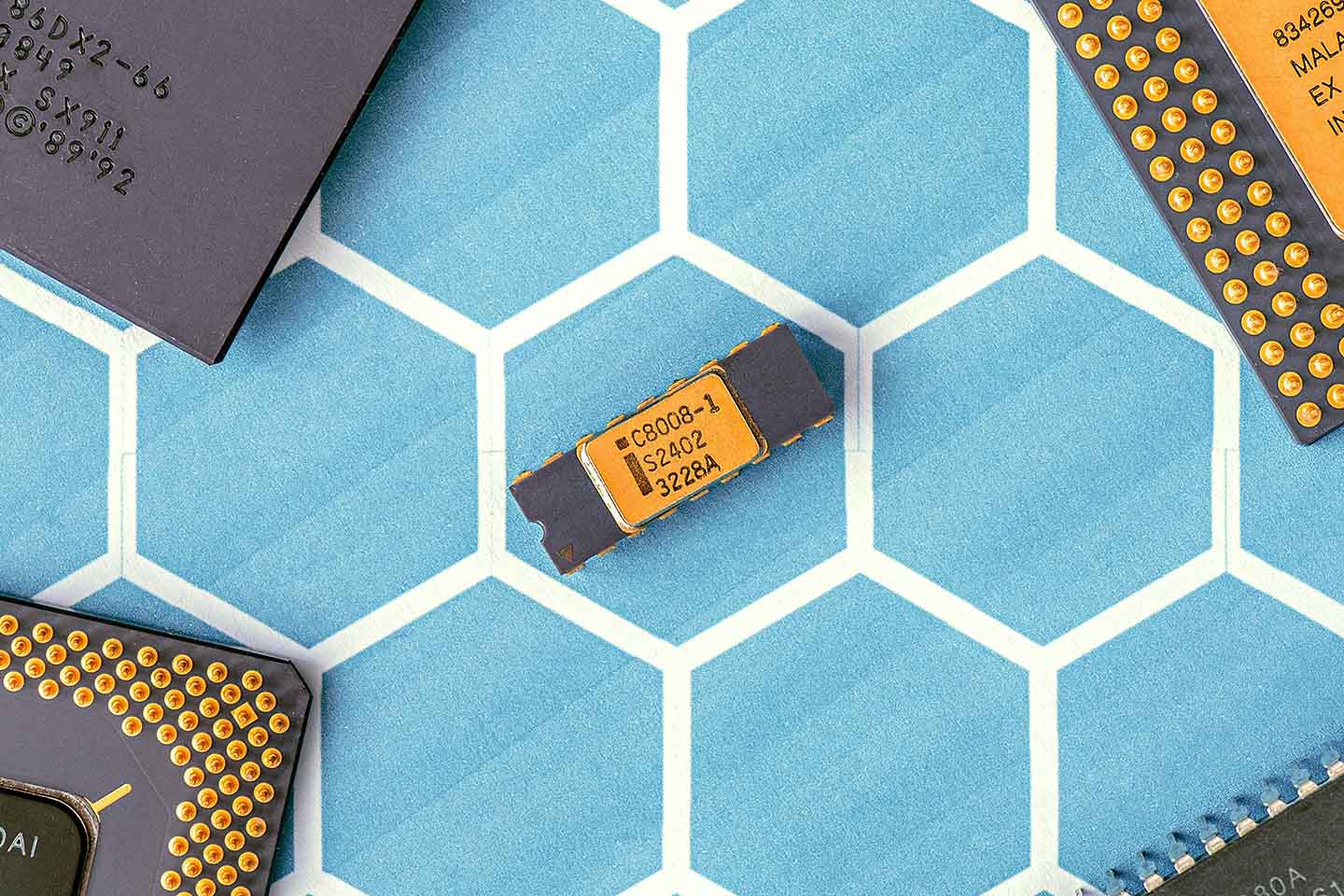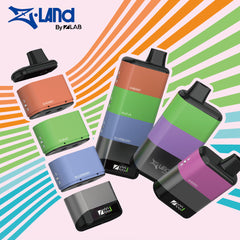Vaping started as a stop-smoking solution, but over time, it’s grown into something much bigger. Today, vape products come in endless varieties, offering options for just about every preference and lifestyle. With so many choices and marketing messages out there, it’s easy to feel overwhelmed — even by the simple question, “What is vaping?”
At Ziip Stick, we know that many long-time smokers might still be unsure about how vaping works or how it can help them quit cigarettes for good. So, let’s break it down and explore how vaping devices work and what they can do for you.
At a glance:
- What is Vaping?
- How do vapes work & what are the typical components?
- What are some of the more popular types of vapes on the market today?
- Is vaping considered worse than smoking?
- What are some of the potential side effects and risks of vaping?
- Is vaping addictive?
- What are some of the best ways to quit vaping?
- Vaping Is Best with the Best Vape For You?
What is Vaping?
At its core, vaping is the inhalation of an atomized fluid (a vapor). This process simulates many of the habitual aspects of smoking. Most early vape devices gave smokers a way to get their nicotine fix without the other harmful chemicals found in cigarettes. But, as vaping has evolved, the ingredients in vape juice have changed too.
Today, vape fans can puff on nicotine-free vape juices or vapes that provide other benefits like melatonin, caffeine or vitamins. But even with the different formulations of e-juice, the vaping process hasn’t changed much.
Vape juice is heated from a liquid reservoir until it turns into vapor, which the user then inhales. This basic process is pretty consistent across all brands.
How do vapes work & what are the typical components?

Diffusers are far more complicated than cigarettes. Many different parts come together in a typical diffuser to provide users with an enjoyable simulation of the classic smoke. Let’s take a look at these parts and how they work in unison:
E-liquid
Just as tobacco is the core ingredient of any cigarette, e-liquid (or “vape juice”) is the core ingredient of any vaping device. This fluid contains a mix of elements that the user inhales in an atomized form. E-liquids are a key differentiator for different vape brands. Each brand keeps its formulas a secret to protect the unique flavor profiles that its users enjoy.
While formulas vary widely, most are based on a combination of two widely used compounds: Propylene glycol (PG) and vegetable glycerin (VG).
PG’s role in vapor production is to carry flavor. This odorless liquid is an ideal medium for delivering vape brands’ signature scents and tastes. It’s thinner than VG, so it produces a vapor that delivers a more potent “throat hit.”
If you’re already familiar with cigarettes, you’re likely already used to a dry and scratchy feeling when you inhale. The "throat hit" from PG creates a sensation similar to smoking, which is why many people trying to switch from cigarettes prefer PG-heavy formulations.
These formulations usually give off less vapor. They also require less heat and power to create a vapor. Most users enjoy a 50:50 PG to VG ratio, but you can find vape juices with more PG in them if you’re looking for a more throaty kick.
VG, as the thicker component, provides the billowy clouds of vapor that vapers have come to love. While PG and VG are both alcohols, VG’s more syrupy consistency makes it harder to create a vapor but more voluminous when it does. People really love thick vape clouds, so it’s unsurprising that niche vape liquids can contain up to 90% VG.
Tank, Pod, or Reservoir
Vape juice is a liquid, and liquids can be messy, so they need to be kept in a container. This container is called a tank, pod, or reservoir.
The term “tank” is generally reserved for larger, customizable devices that include a user-fillable chamber for the e-liquid. Pods are usually pre-filled, disposable attachments that users throw away once they’re empty. Reservoirs are common in single-use non-refillable devices.
Coil and Wick
The coil and wick are the heart of the vaping process and work together in a very simple way. E-liquid from the tank, pod, or reservoir is moved into the coil via the wick, where the heat that generates the vapor cloud is applied. The vapor is drawn from there to the user’s mouth via a mouthpiece.
Battery
The coil produces the heat required to vaporize e-liquid by drawing power from a battery. Batteries can range in size and may or may not be replaceable or rechargeable.
What are some of the more popular types of vapes on the market today?

Vapes come in many different shapes and sizes, but we can categorize them into several major types. Some of the most popular vapes include:
Pod Vapes
Pod vapes straddle the line between disposable and reusable. While the main devices are reusable, the e-juice pods may or may not be refillable. Some designs feature disposable wicks and coils built into every pre-filled pod, while others integrate the coil into the diffuser, which you will occasionally have to replace it yourself.
If you’re considering a pod vape, decide whether you’d like one with refillable pods that you can fill with your favorite e-juice or one that relies on pre-filled pods from the manufacturer.
Sub-ohm Vapes
Sub-ohm vapes get their name from the extremely low-resistance coils they use, which usually operate at less than 0.8 ohms during vapor production. When coupled with powerful batteries, these coils make quick work of even the most VG-heavy vape liquids, producing huge clouds of dense vapor.
Many sub-ohm vapes are prized by competitive vapers for the showy thick clouds they produce. However, VG-dominant vape juice produces weaker flavors and throat hits, making these more expensive devices less attractive for regular users — especially those trying to quit smoking.
Disposable Vapes
As the name implies, disposable vapes are designed to be thrown away. These are generally simple devices — some with rechargeable batteries — that come pre-filled with a set amount of e-liquid. Most disposable vape manufacturers will list an anticipated “puff count,” so you know approximately how many inhalations you can enjoy from each device before throwing it away.
Is vaping considered worse than smoking?

No, smoking is worse. As Johns Hopkins Medicine reports, vaping is less harmful than smoking, but it’s still not safe.
According to the American Lung Association, “There are approximately 600 ingredients in cigarettes. When burned, cigarettes create more than 7,000 chemicals. At least 69 of these chemicals are known to cause cancer, and many are toxic.”
When you vape instead, you cut almost all those chemicals — and all the carcinogenic ones — from your routine. However, unless you are using nicotine-free vape juice, you are still exposing your body to a habit-forming toxic compound that can cause cardiovascular issues. In the end, plain air is the only inhalant that is completely safe.
What are some of the potential side effects and risks of vaping?

While there haven’t been enough studies to establish any long-term risks associated with PG/PV vaping, there are several short-term risks you should be aware of.
Coughing
Coughing is usually an issue for users who are new to both vaping and smoking. The introduction of unfamiliar compounds to the lungs can cause fits of coughing that rapidly subside and disappear with prolonged use.
Shortness of breath
Fits of coughing can cause shortness of breath, but even those who don’t cough when vaping can occasionally find their breathing restricted when trying new and different vape juice formulations.
Eye irritation
The atomization involved in vape production means that exhaled vapor can get everywhere — even into your eyes, where it may or may not act as an irritant, depending on the formulation involved.
Headaches
Vape-related headaches can happen due to how the ingredients in e-juice interact or because of changes in your breathing habits when using a vaporizer.
Dry and irritated mouth and throat
Like coughing, a dry or irritated mouth or throat is more likely among users new to vaping. If these symptoms don’t disappear as you become comfortable with a vape, you may want to consider exploring other devices, different vape juices, or active solutions like beverages and lozenges.
Nausea
Some people just aren’t built for vaping. Should you find that every vape you try simply makes you nauseous, it’s possible that vaping isn’t the solution for you. If you’re vaping to quit cigarettes but find that vapes just make your nausea worse, it’s likely time to look into other nicotine replacement therapies like patches or gum.
Is vaping addictive?
Addiction is a complicated affliction. It’s commonly confused with chemical dependency, as the two share many aspects.
Nicotine use is addictive. Nicotine users’ bodies develop a reliance on regular (and increasing) doses of nicotine to maintain regular metabolic function. Because cigarettes deliver nicotine, smokers develop a dependence.
However, they also develop positive associations with other aspects of the smoking ritual: social time away from work, rhythmic breathing, and neural stimulation from the repetitive hand-to-face motion. These are all habits that fall short of a clinical addiction but will reinforce a chemical dependency.
The nicotine in vapes is as addictive as that in cigarettes. However, nicotine-free vapes allow users to continue to enjoy all of the associated habits without developing (or continuing) a nicotine addiction. Many people use nicotine vapes as a stepping stone from cigarettes to nicotine-free vapes that allow the continuation of other enjoyable rituals.
What are some of the best ways to quit vaping?
If you’re addicted to nicotine vaping, tapering your devices’ nicotine content is a good place to start. Many vape companies produce versions of the same vape juices with varying doses of nicotine. Your goal should be to get to a point where you can enjoy nicotine-free vaping by gradually reducing your nicotine intake with each new device over time.
Once you’re happy with a nicotine-free vape, your next goal is to replace the other aspects of vaping that you enjoy with equally enjoyable activities. Chewing gum while others vape can provide a good social substitute, while fidgets, meditation, and breathing exercises can replicate some of the other habits associated with smoking.
Vaping Is Best with the Best Vape For You?

So, ultimately, what is vaping? It’s an easy way to enjoy the less harmful, more pleasant aspects of smoking. And if you already smoke, it’s a way to take your first hesitant steps away from the cigarette habit.
The vape market is huge, so now that you know what to look for, you shouldn’t have any trouble finding the vape that fits best for you. You’ll know when you’ve found the right one because it will taste like it was designed with you in mind.
Still unsure where to start? Our Z Stick disposables are only $9.99 each for 500 puffs and come in 12 delicious flavors. With value like that, you can explore the tastes that interest you most — without a serious financial commitment.








Leave a comment